
Halo: Combat Evolved is a 2001 first-person shooter video game developed by Bungie and published by Microsoft Game Studios for the Xbox. It was released as a launch game for Microsoft's Xbox video game console on November 15, 2001. The game was ported to Microsoft Windows and Mac OS X in 2003. It was later released as a downloadable Xbox Original for the Xbox 360. Halo is set in the twenty-sixth century, with the player assuming the role of the Master Chief, a cybernetically enhanced supersoldier. The Chief is accompanied by Cortana, an artificial intelligence. Players battle aliens as they attempt to uncover the secrets of the eponymous Halo, a ring-shaped artificial world.

Battlefield 1942 is a 2002 first-person shooter video game developed by Digital Illusions CE and published by Electronic Arts for Microsoft Windows and Mac OS X. The game can be played in single-player mode against the video game AI or in multiplayer mode against players on the Internet or in a local area network. It is a popular platform for mod developers, with many released modifications that alter the gameplay and theme.
Battlefield is a series of first-person shooter video games developed by Swedish company EA DICE and is published by American company Electronic Arts. It started out on Microsoft Windows and OS X with Battlefield 1942, which was released in 2002. The Battlefield series has been played by more than 50 million players worldwide as of August 2012.

Fallout 3 is a 2008 action role-playing game developed by Bethesda Game Studios and published by Bethesda Softworks. The third major installment in the Fallout series, it is the first game to be developed by Bethesda after acquiring the rights to the franchise from Interplay Entertainment. The game marks a major shift in the series by using 3D graphics and real-time combat, replacing the 2D isometric graphics and turn-based combat of previous installments. It was released worldwide in October 2008 for Microsoft Windows, PlayStation 3, and Xbox 360.

Frostbite is a game engine developed by DICE, designed for cross-platform use on Microsoft Windows, seventh generation game consoles PlayStation 3 and Xbox 360, eighth generation game consoles PlayStation 4, Xbox One and Nintendo Switch and ninth generation game consoles PlayStation 5 and Xbox Series X/S, in addition to usage in the cloud streaming service Google Stadia.

Mirror's Edge is a 2008 first-person action-adventure platform game developed by DICE and published by Electronic Arts. The game was released for PlayStation 3 and Xbox 360 in November 2008, and for Windows in January 2009. Set in a near-future city, it follows the story of Faith Connors, an underground parkour courier who transmits messages while evading government surveillance. To progress through the game, the player must control Faith from a first-person perspective and complete a series of levels that involve performing a sequence of acrobatic manoeuvres, including jumping between rooftops, running across walls, and sliding down zip lines.
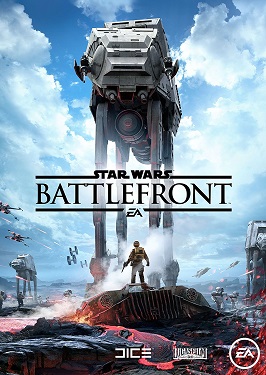
Star Wars Battlefront is an action shooter video game developed by DICE, with additional work from Criterion Games, and published by Electronic Arts in November 2015. The game, based on the Star Wars film franchise, is the third major release in the Star Wars: Battlefront sub-series, but is considered a reboot to the previous games, instead of a sequel, to reflect the new Star Wars canon that Lucasfilm established after being acquired by The Walt Disney Company.

Battlefield 3 is a 2011 first-person shooter video game developed by DICE and published by Electronic Arts for Microsoft Windows, PlayStation 3 and Xbox 360. It is a direct sequel to 2005's Battlefield 2.
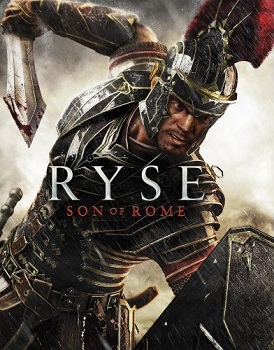
Ryse: Son of Rome is a 2013 action-adventure video game developed by Crytek and published by Microsoft Studios. Set in an alternate version of Ancient Rome, Ryse follows the life of the Roman centurion Marius Titus as he becomes one of the leaders in the Roman Legion. Gameplay revolves around Marius using his sword to strike enemies and shield to deflect attacks. Execution sequences are featured in the game, which are quick-time events that serve as an extension to combat. The game features a cooperative multiplayer mode, which tasks players to fight against waves of enemies in maps that are changing dynamically.

Battlefield 4 is a 2013 first-person shooter video game developed by DICE and published by Electronic Arts. The game was released in October and November for Microsoft Windows, PlayStation 3, Xbox 360, PlayStation 4, and Xbox One, and is the sequel to 2011's Battlefield 3, taking place six years later during the fictional "War of 2020".
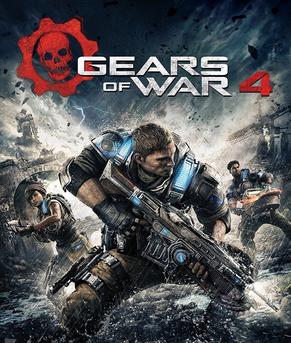
Gears of War 4 is a 2016 third-person shooter video game developed by The Coalition and published by Microsoft Studios for Windows and Xbox One. It is the fourth main installment in the Gears of War series, and the first mainline entry not to be developed by Epic Games. The game was released worldwide on October 11, 2016. The sequel, Gears 5, was released on September 10, 2019.
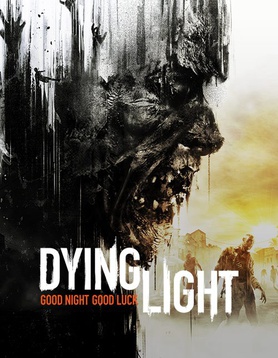
Dying Light is a 2015 survival horror video game developed by Techland and published by Warner Bros. Interactive Entertainment. The game's story follows an undercover agent named Kyle Crane who is sent to infiltrate a quarantine zone in a fictional Middle Eastern city called Harran. It features an enemy-infested, open-world city with a dynamic day–night cycle, in which zombies are slow and clumsy during daytime but become extremely aggressive at night. The gameplay is focused on weapons-based combat and parkour, allowing players to choose fight or flight when presented with dangers. The game also features an asymmetrical multiplayer mode, and a four-player co-operative multiplayer mode.
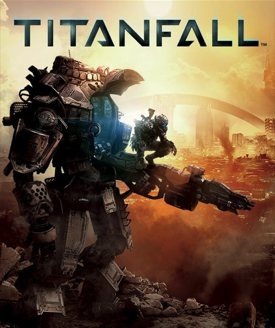
Titanfall is a multiplayer first-person shooter video game developed by Respawn Entertainment and published by Electronic Arts. It was released for Windows and Xbox One on March 11, 2014; an Xbox 360 version ported by Bluepoint Games was released April 8, 2014. The game was anticipated as the debut title from developers formerly behind the Call of Duty franchise.
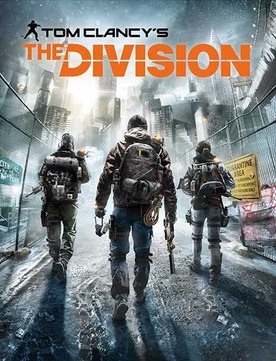
Tom Clancy's The Division is an online-only action role-playing video game developed by Massive Entertainment and published in 2016 by Ubisoft, for PlayStation 4, Windows, and Xbox One. It is set in a near future New York City in the aftermath of a viral pandemic; the player, a Special Agent of the Strategic Homeland Division, is tasked with helping the group rebuild its operations in Manhattan, investigate the nature of the outbreak, and combat criminal activity in its wake. The Division is structured with elements of role-playing games, as well as cooperative and player versus player online multiplayer. This game also marks the debut of Massive and Ubisoft's Snowdrop game engine.

Fallout 4 is a 2015 action role-playing game developed by Bethesda Game Studios and published by Bethesda Softworks. It is the fourth main game in the Fallout series and was released worldwide on November 10, 2015, for PlayStation 4, Windows, and Xbox One. The game is set within an open world post-apocalyptic environment that encompasses the city of Boston and the surrounding Massachusetts region known as "The Commonwealth".

Ori and the Blind Forest is a platform-adventure Metroidvania video game developed by Moon Studios and published by Microsoft Studios. The game was released for Windows and Xbox One in March 2015, and for Nintendo Switch in September 2019. Players assume control of Ori, a small white spirit, and Sein, the "light and eyes" of the Forest's Spirit Tree. Players are tasked to move between platforms and solve puzzles. The game features a save system called "Soul Links", which allows players to save their progress at will with limited resources, and an upgrade system that allows players to strengthen Ori's skills and abilities.
Faith Connors, also known by her alias Phoenix Carpenter, is a fictional character and the protagonist of the 2008 action video game Mirror's Edge. Presented in the game as a "Runner", Faith transports items for revolutionary groups hiding from the totalitarian government. In addition to the game, Faith also starred in its comic tie-in, and appears in the game's reboot, Mirror's Edge Catalyst.

The Electronic Entertainment Expo 2015 was the 21st E3 held. The event took place at the Los Angeles Convention Center in Los Angeles, California. It took place from June 16 to June 18, 2015, with 52,200 total attendees.

Crackdown is a series of open world action-adventure video games created by David Jones and published by Xbox Game Studios. The series takes place in a futuristic dystopian city controlled and enforced by a law enforcement organization called the Agency. The games center on the Agency's supersoldiers, known as 'Agents', as they fight threats ranging from various criminal syndicates, a terrorist group known as 'Cell', and zombie-like monsters called 'Freaks'.

Mirror's Edge is a side-scrolling platform game developed by IronMonkey Studios and published by Electronic Arts. It was released for iPad and iPhone in 2010, and for Windows Phone in 2012. The game is a prequel to the original Mirror's Edge, setting the scene about Runners and the city's shady corporations. It received very positive reviews from critics.


















